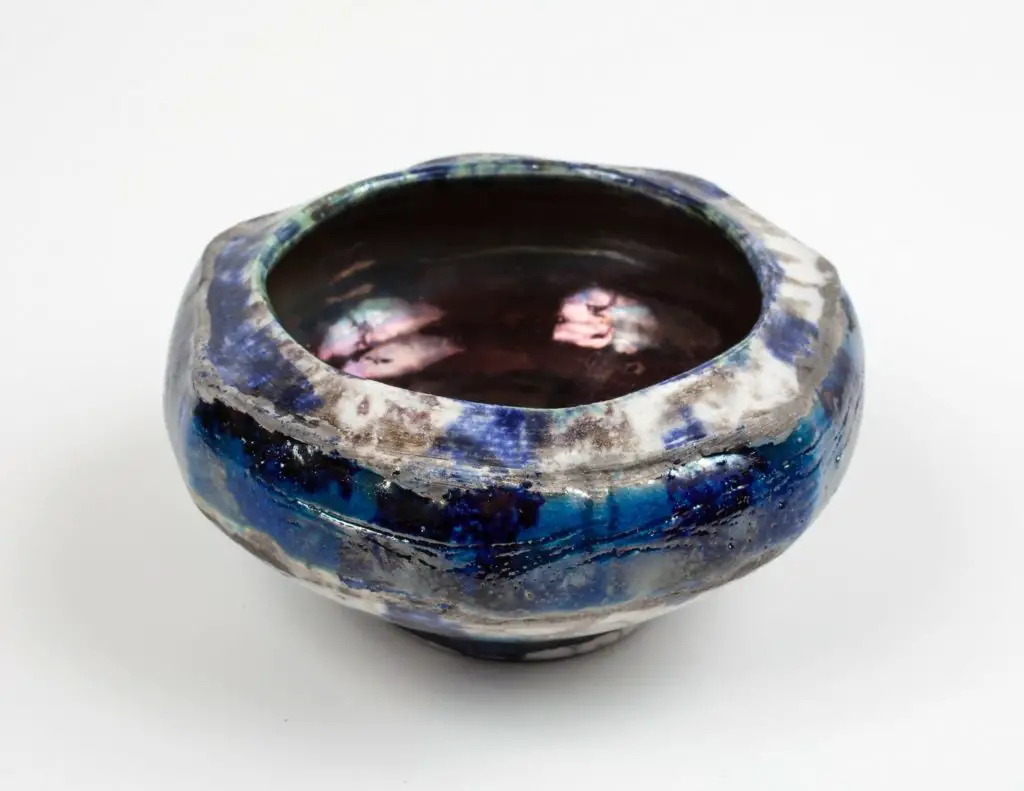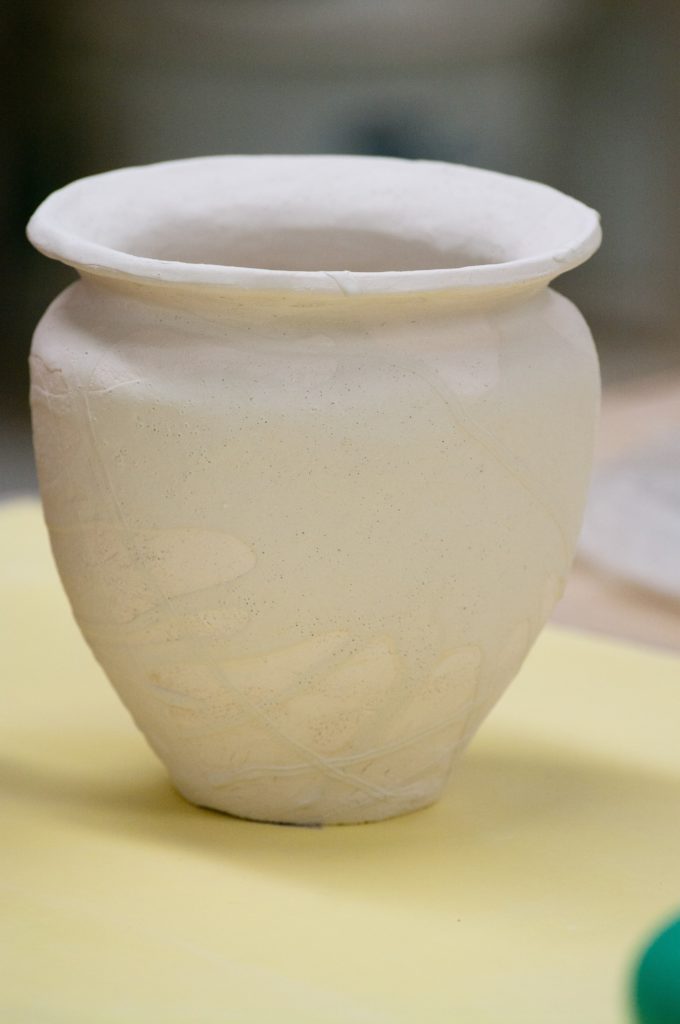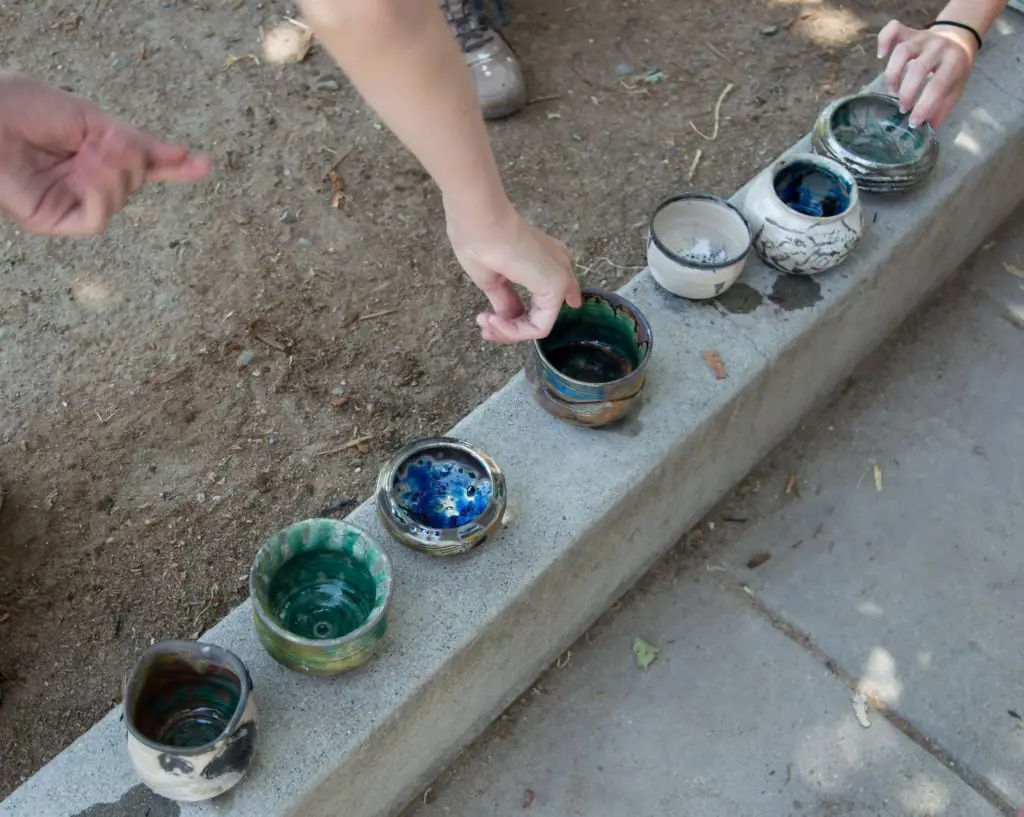Raku firing is a little bit different than other types of firing since oftentimes it has effects that are a little different than what others clay bodies would create with this. But, we’ll highlight what the best options for this are, and why they matter.

In this, we’ll give you an in-depth look at what is the best clay for raku and how to use it, so that, once you choose the type of clay that you feel is best for this, you know how to create the items that you love. We’ll tell you everything that you need to know so that, if you’ve been interested in raku firing, it’s totally possible.
What You Need to Choose Before
There are many different clays that you can use with your raku firing, but there are a few rules that you’ll need to keep in mind before you begin with this, and they are as follows:
- Don’t use earthenware if you’re looking to create crackle effects
- The closer it gets to vitrifying, the less of an effect the carbon has on reduction, so don’t use clays that get close to it
- Keep clay that has a lot of iron away from this, since it does resist the carbonization of the body itself
Typically, stoneware clays are your best bet with this type of pottery making, and that’s because it has the following properties:
- They can be fired just enough to create a light tan color and have a warm appearance
- Some of these clays that fire white also work too since it create s an ivory appearance
Sometimes, you can get one that’s specifically for raku firing, but there are a few considerations with that too. However, if you’re curious on what types for factors to look for, keep reading on because we’ll go over both.
The issue with “Raku” labeled Clay
While clay that’s labeled specifically for Raku might seem like a good idea, but there are a few issues with it.
Usually, this type of clay is very grogged and contains something called Kyanite, and oftentimes, it’s better for the bigger pieces, but not recommended for a generalized raku firing.
Why is that? It’s because it causes the following to happen after a while.
- There’s so much grog in this that your hands can end up bleeding after a while
- The grog content oftentimes beaks the surface tension of pieces that are glazed, causing a “cross hatch” pattern that doesn’t look very good
- The body is anemic, and oftentimes, isn’t the best to work with
- It also is much more expensive than other types of clay
Here’s the reality of it: stoneware survives just as well as this type of clay, and oftentimes, you can do a whole lot more with this if you’re making a small raku piece, so it might be better for you to consider this option.
There are also ovenware clays, which contain a bit less grog, so it’s a bit nicer to your hands, and oftentimes, it makes for the best type of clay body, so I do suggest if you’re starting out, pick up some of this ovenware clay.
Considering Thermal Shock Properties
Thermal shock is something you must also consider when you’re choosing a raku firing clay to use. Some of the properties of this include the following:
- You want it to fire from around cone 6 to cone 10
- You should consider the refractories that are there, including fire clay that’s modified for using this
- You may want to find one that has 30% grog in it too
- The larger the piece is, the more resistant to the thermal shock the clay has to be, so if you do have this thing going on, try to add more refractory material or grog to the equation to help with this
The thermal shock is one of the top things to consider when choosing this type of clay, so always have it in mind when you’re looking to create some sort of raku clay body.
Plasticity
The plasticity of the clay is another big part of raku clay that you need to consider, and the texture also does come into play with this as well.
In general, here are a few things that you’ll want to consider when choosing a raku firing clay body:
- Typically, you need to use grog or sand alone with a lot of refractory stoneware bodies to make this work
- Don’t use fire clay unless you’re able to fire this at a higher temperature, so you’ll want to make sure it doesn’t have a lot of alumina in it
- You want the clay body to be workable, but also not as plastic as the other throwing bodies that are out there
So, you’ll want to be able to work with it, but not be so soft it’s incredibly easy to mold around. Keep that in mind when you’re choosing this type of clay body.
When choosing the texture for this type of clay body, there are a few other things to keep in mind with this:
- Your texture directly relates to the ingredients and plasticity in order to reduce your thermal shock
- You may notice it’s very rough due to the grog and texture that’s in it
- Smoother textures, however, can be achieved with a finer grog, sad, or even some kyanite
- If you want to create a more heat-resistant body that’s also incredibly smooth, you want to use kyanite, since it’s a great material that’s crystalline, and does the job well
Some of these textures can be affected by the materials that you add, and from there, when you bisque fire it, it will help to burn off the excess from it, including nutshells, sawdust, nylon that’s in it, hair from animals, feathers, and even cellulose in it.
You can add all of these together, mix it up, and from there create a finer texture to your pottery piece, which is why a lot of people will choose this for their pottery wares, and create a much better, more reliable piece than ever before.
Clay Body Color
Does the color affect the piece? Some may say so, but you can actually directly change the glaze color with the clay body in this, especially since raku firing creates different, intricate patterns.
Some of the rules to follow with this type of firing and colors include the following:
- If you use a clay body that’s darker, it creates a more muted and subtle tone to this that’s darker
- If you have a clay body that has a lot of iron in it, it’ll make the glazes melt a little lower, especially if the coat is thin
- Sometimes, with that iron in it, you can create different unique colors to the piece
- Lighter or buff-colored pieces will brighten your colors used for glazing
- White will create a directly lighter color when the glaze is put on there, and it will make the glaze easily seen
Typically, if you want the piece to have more vibrant coloring, you go with a lighter color, but if you want it to have a darker, more subtle color, you go with a darker clay body, and you can experiment with the color variants in the glaze that you want to try to see what will work for you.

Some Clay Body Recipes
Alright, so we’ve gone over a few of these different aspects of clay bodies, and you may want to consider buying some, but making your own is another great option too.
The beauty of making your own is that you can do the following with it:
- Experiment and make something new
- Try a few new things to create the best results possible
- Perhaps save a little bit of money
- Create a more unique body to work with
There is a lot of fun to be had when you’re working with clay for raku firing, and here, I’ll give you a few cool clay bodies to work with, and ones that will give you some cool, new pieces to work with.
A Simple Clay Body
This is more of a lighter-colored one, and it’s incredibly simple. If you’re a newer potter, his might be the better option since it’s incredibly easy.
To make this, you need to use the following:
- 67% ball clay
- 33% grog
Mix these together, and then there you go. You have a simple clay body to work with. This is good for learning basic firing, and it will allow for you to glaze it however you want, and the color will show through.
Brown Body
A brown raku body is great if you want to add a darker element to the foray. Remember, a darker body allows for the following:
- A darker glaze
- More subtle textures
Some people like to work with a darker body since it creates a nice, and deeper look to the piece. To make this type f body, you simply mix the ingredients below:
With this one, you will have a bit more textured in terms of results, so remember that when you’re working with this
A Clay for Larger pieces
So let’s say that you’ve worked with smaller bodies before, and you want to work on something newer, but you don’t want to deal with buying specifically raku clay since you don’t want to cut up your hands with the grog.
Well, this recipe below lets you work with a great clay body that allows you to get the results that you want. You should make sure to fire it to around cone 8-10 for the best results.
To make this, mix the following together:
- 25% cedar heights Goldart
- 25% ball clay
- 25% finer grog
- 25% fire clay
Mix it together, and work with it in batches, and you’ll definitely get some cool results from this, and get the best options possible from your clay.
The Kiln Needed
Finally, let’s take a moment to talk about how you fire this type of clay since raku firing is a little bit different than your typical firing experience.
We’ve gone into the different aspects of how to fire this type of clay before, but we’ll talk about the cone that you should use in order to create the best results possible.
Raku kilns are oftentimes made of different configurations, and you can make your own too. But, there are a few things you must keep in mind before you start to fire this, and they include the following:
- Since they are red-hot when they’re removed from your kiln, you need to make sure that you get something that won’t radiate too much heat when you remove it
- Top-loading kilns aren’t the best either, since they oftentimes force you to have to reach inside, and remember, these are incredibly hot
- You want a small, front-loading electric kiln if you have to use something electric, but gas is better
- Get a gas kiln since they oftentimes are made for the purpose of pulling out the items in order to fire it
- You will want some raku tongs as well since the clay will be incredibly hot when fired
When you load this type of kiln, you put everything on a single level, and make sure that you leave many more spaces between the pots, and you should try to keep everything on an even plane.
When you do remove it, be careful since the pieces can be breakable.
Raku firing is fun!

Raku firing is fun, and you learned about the clays that you should use with this here. There are many different aspects to raku firing, but the correct clay is a big part of it because, without the right clay, it can affect the integrity of the piece.
Make sure you choose your bodies wisely, and experiment with firing, but be safe as you do it too.







